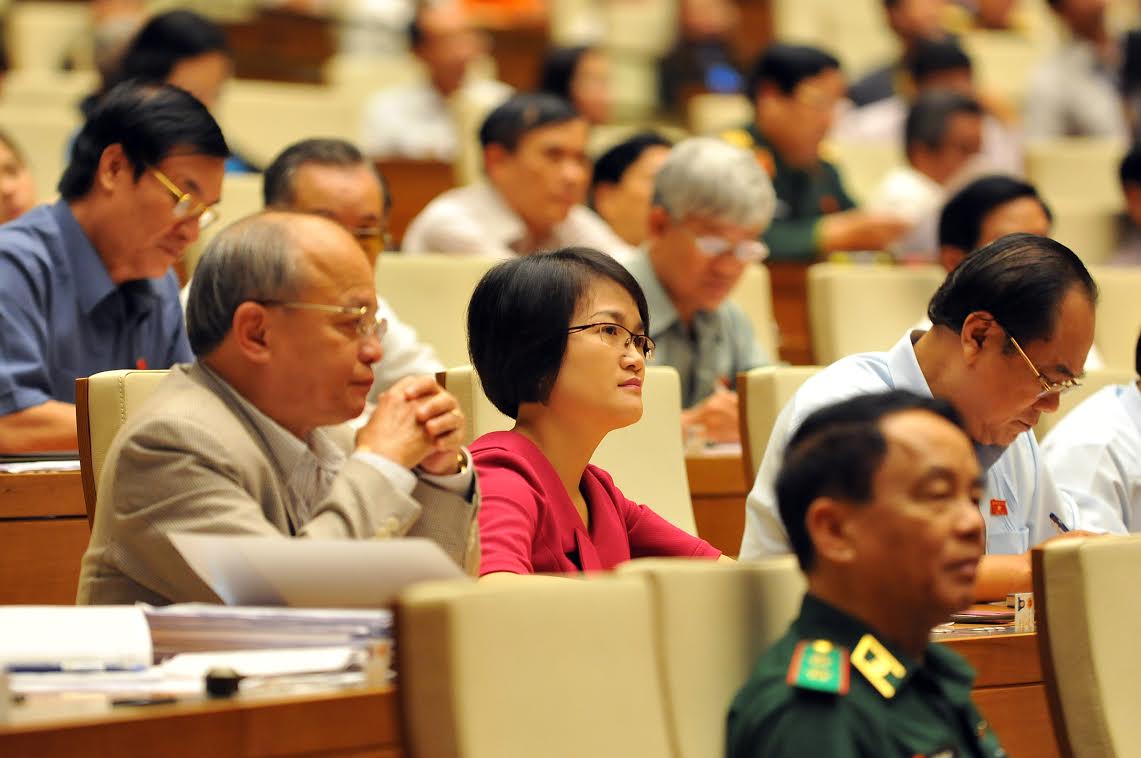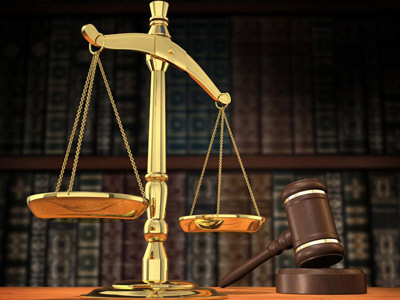When participating in court hearings in 2018, everyone will encounter many changes in the courtroom. Among them, the following three events stand out:
1. New Dress Code for Judges Effective January 1, 2018
Decision 210/QD-TANDTC stipulates that the attire for judges in 2018 consists of a long-sleeved black gown with the following material, style, and patterns:
- Material: High-quality fabric suitable for different weather and climate conditions across regions.- Style: The gown's length is 75% of the distance from the nape to the heel, with two front sections and one back section. Each front section has two pleats directed towards the sides. The back section has three pleats, one in the center and two on either side, directed towards the armpits. The shoulder pads have additional inner linings made of the same fabric, 9 cm in height and with a width conforming to the neckline. The gown is fastened with a plastic zipper matching the trim color of the gown.
The sleeves are curved, 15 cm in height, with inner linings extending to the cuffs. The shoulder strap is bat-shaped, 16 cm in height.
The front trim on both sides is curved and 8 cm wide, with the outer trim being 8 cm and the inner trim 5 cm. Each cuff has 8 small pleats, with 4 directed forward and 4 backward.

- Patterns:- Supreme People's Court Judge's Gown: Red trim on the front, sleeves, and shoulder straps with geometric patterns and yellow piping.- High-level, mid-level, and primary-level Judge's Gown: Burgundy red trim on the front, sleeves, and shoulder straps with geometric patterns and gold piping.
This attire is uniformly applied nationwide, with a duration of use of 5 years and an initial provision of 2 gowns.
2. Courts Must Record and Video Proceedings
This notable new regulation is mentioned in Circular 02/2017/TT-TANDTC regarding the issuance of court session organization procedures, effective January 1, 2018.
In addition to the rules specified in Article 256 of the Criminal Procedure Code, Article 234 of the Civil Procedure Code, and Article 153 of the Administrative Procedure Law, the following rules must also be observed:
- Courts must record, videotape, and video with audio during court proceedings, in accordance with procedural laws.- The panel, prosecutors, court clerks, participants, and attendees must sit in designated positions in the courtroom.- Judges, jurors, and court clerks must wear their specified judicial attire.
For trials and hearings concerning matters under the jurisdiction of the Family and Juvenile Court, the court session organization must ensure a friendly, appropriate environment to guarantee the best interests of minors under 18 years old.
3. Lawyers to Sit Equally with Procuracy Representatives
As stipulated in Clause 4, Article 4 of Circular 01/2017/TT-TANDTC, the seating arrangement for participants in proceedings, attendees, and those present in court sessions and hearings follows Appendix No. 01 attached to Circular 01/2017/TT-TANDTC.
According to Sub-item 2.1, Section 1, Appendix No. 01 of Circular 01/2017/TT-TANDTC, at first-instance and appellate criminal trials, defense lawyers, and representatives protecting the legal interests of victims and litigants are seated equally with the representatives of the Procuracy.
Thus, effective January 1, 2018, lawyers will officially sit on par with representatives of the Procuracy when participating in court proceedings.

 Article table of contents
Article table of contents





.Medium.png)
.Medium.png)
.Medium.png)
.Medium.png)
